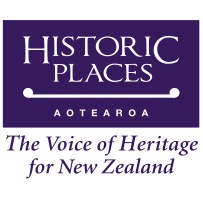The following is the text of the Historic Places Aotearoa Submission to the Building Amendment Bill:

Patron: Dame Anne Salmond, DBR, FRSNZ, FBA
2013 New Zealander of the Year
25th October 2018
Ministry of Building, Innovation and the Employment
PO Box 1473,
Wellington 6140
Submission on
BUILDING AMENDMENT BILL
Introduction
This submission is made by Historic Places Aotearoa Inc. (HPA) which welcomes the opportunity to comment on the Building Amendment Bill.
The reasons for making this submission are that HPA promotes the preservation of historic places in Aotearoa New Zealand. HPA also has an interest to promote the education of the public in the appreciation of heritage values. HPA is a key stakeholder in the consultation process and answerable to its affiliated regional societies and associated membership.
HPA has reviewed the Building Amendment Bill and considered the impact the proposed amendments will make on heritage buildings.
HPA has a particular interest in the subject of this Bill, for the merits of the sustainable urban quality and distinctive character of New Zealand cities and towns.
Too often demolition of heritage building post disaster is seen as the only solution to public protection. Other countries deal with heritage buildings in a more considered manner. Italy for example have teams of trained experts that will shore up damaged heritage buildings post natural disasters. This enables heritage and structural assessments to be made on a more considered basis.
It will be important that New Zealand trains people who are competent to make decisions with respect to heritage buildings and structures following an emergency situation and can either be, or assist the “responsible person” who is exercising their powers in the designated area under the proposed revisions to the Building Act.
HPA is generally supportive of the proposals in the consultation document as they try to strike a balance between the risk to life, the built historical environment and public / private rights during the difficult periods associated with managing buildings after an emergency and to provide for investigating building failures.
General comments:
In New Zealand under the current heritage management and protection systems, not all heritage is listed with Heritage New Zealand Pouhere Taonga (HNZPT). Much of the country’s heritage is scheduled under each of the various district plans.
For the purposes of this amendment, consideration needs to be given to acknowledging the significance of heritage listed buildings in the heritage lists of district plans, as required under the RMA, as well as those on the HNZPT National Historic Landmarks list and the HNZPT category one list.
In most cities there are examples of significant heritage buildings scheduled in the local territorial authority (TA) plans that are not listed by HNZPT or have been listed as Category II items. This may be due to HNZPT budget constraints, lack of information when buildings were initially assessed.
The top tier of heritage buildings scheduled in district plans (recognising that there is no consistent heritage assessment approach across the range of plans) should, therefore, be included along with those listed by HNZPT.
On its own admission, HNZPT does not have the resources to list all places that might reasonably be included on its lists and it relies on scheduling in district plans to supplement its own.
It should also be noted that buildings listed by HNZPT does not provide any protection to the building under the RMA, but does require a TA to advise HNZPT of any proposed building consented work. Section 39
Since it is the heritage schedules maintained by TA’s that have standing under the RMA process, and since these proposals may set aside the RMA processes in emergency situations, it is essential that these schedules are considered in the proposals.
Furthermore, for small communities there may be very few, or no buildings listed as Category One on the HNZPT list, but a significant number of Category Two buildings or buildings listed as significant in the TA’s heritage schedules. The current proposals would provide little or no protection for scheduled heritage buildings in small cities and towns such as Wairoa, Temuka etc. However heritage buildings are a significant resource for the town and are an important part of their identity.
In the case of a larger towns such as Napier, Oamaru, Whanganui and Gisborne the context provided by heritage buildings of lower status is critical in supporting the unique heritage identity of the place. It is essential that the proposals recognise the importance of unified heritage areas such as these and the importance of heritage that is not of national importance but is of critical significance in the context of a smaller community.
Response to Specific Clauses
Clause 133BU:
This clause and associated subclauses only refers to Category 1 or wāhi tūpuna in the list referred to in paragraph (a)(i) of the definition of heritage building in section 7; or (b) referred to in paragraph (a)(ii) of that definition.
The relevant approvals required should be extended to include all items on district plans that have the highest classification as defined by the relevant plan. Generally, this is a A classification.
133BV Works to remove or reduce other risks
Part 3a wording should be strengthened to rather include the word consult, rather than “seek and consider”.
The current working does not provide for any two or three way conversations to be undertaken and for meaningful debate around the options to be had.
Contact:
James Blackburne
President
Historic Places Aotearoa Inc
P O Box 693
Christchurch 8041











Comments are closed.